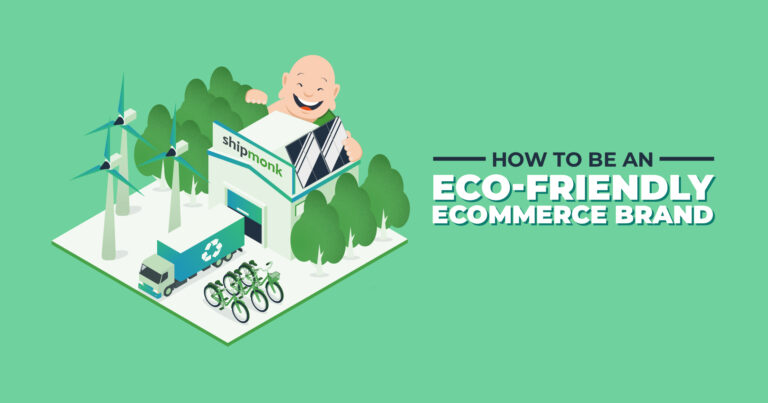eCommerce Solutions for a Checkout Page That Converts
You’ve spent countless hours perfecting your products. Your website is fully branded, beautifully designed, properly organized, and mobile-responsive. Customers are swooning over your amazing products and adding them into their virtual shopping carts.
Now comes the real test: the checkout page.
If your customers are dropping like flies once they’ve reached your checkout page, it’s time to make some optimizations. Read on to learn how to create a checkout page that will convert your customers from browsing to buying.
Design for simplicity
Once your customer is on the checkout page, the sole focus should be on completing the order. At this stage, your customer should not be bombarded with pop-ups, ads, non-essential information, or any other distractions.
Don’t force account registration
While you may want to encourage customers to login or sign up for an account, even the shortest forms can cause a potential customer to abandon their order. Let the customer place their order, then build the relationship. Once the customer has checked out, use the “Thank You” page to encourage them to create an account. You can make this extra easy for customers by pre-populating the name and email address they submitted with their order, so they only need to enter their desired password to create an account.
Make the navigation disappear
Once your customer has reached checkout, they don’t need to be tempted to shop other products and categories. While it might seem like a good thing to get your customer shopping for more items, they can easily become distracted from ordering and never complete their purchase. Instead, get them to finish their order quickly, woo them with a great experience, and then they’ll be back for more in the future. If a customer has reached the checkout page and is not ready to checkout, a simple “Continue shopping” button will suffice.
Upsell, upsell, upsell
While it may seem like the opposite advice of the previous paragraph, that is not the case. There’s a big difference between encouraging your customer to add more items to their cart (good for business) and encouraging them leave a checkout page (not so good for business). The point being: keep your customer on the checkout page. You can accomplish this while still attempting to increase their order value by simply adding upsells to the checkout page. For example, you can add a section titled, “You might also like…” or “Customers who bought this also purchased…” or “Related items”. The key is to feature products targeted to the specific customer’s purchase.
Make it easy to use
If a customer accidentally added two of the same item to their cart, don’t make them restart the order to fix it. Your checkout page should allow for easy updating of items in the shopping cart. Make sure the customer has clear and easy-to-use options to change the quantity of an item in their cart or remove items entirely.
Verify and validate inventory
If you’ve ever ordered something online only to receive an email that the item you paid for is on backorder, then you’re aware of the intense frustration and disappointment this scenario can cause for a customer. That’s a quick way to ruin a shopper’s experience of your brand and drastically decrease their confidence in ordering from your store. Both your company and your customer should be assured that the desired items are in stock. The best ecommerce solutions include inventory management systems that verify items are available for order – before the order is submitted. You can reassure customers that their item is in stock with a simple message such as, “In stock” or “Ready to ship”.
Prominently feature the checkout button
Have you ever been on a checkout page and couldn’t find the “Submit Order” button? Don’t turn the checkout page into a scavenger hunt. Feature your checkout button prominently by making it larger than the surrounding text. The buy button should be shown in the appropriate place for a streamlined user experience and can be featured in multiple locations, such as at the top and bottom of the checkout page.
Consider A/B testing different colors for your checkout button, such as orange or green. Light or neutral colors can camouflage your checkout button, making a frustrating experience for shoppers. Keep in mind that your brand colors may not be the right colors for your checkout button.
Don’t make coupon codes prominent.
If you ask for a coupon code, consider making this field less prominent. Many shoppers feel like they’re not getting the best deal if they don’t have a coupon code when shopping on a site that offers this option. If a customer leaves your site to search for a coupon code, they may abandon their cart completely. Instead of including a box to enter a coupon code, include a text link that says, “Have a coupon code?” and populates an input field once clicked.
Shorten your order form
Are you asking customers to fill out anything that is not absolutely essential to their order? Lose it – fast. This is not the time to ask your customers, “How did you hear about our company?” Limit required fields to what is actually required to fulfill their order. Ideally, your order form should be limited to one page (three at most). The more steps a customer has to click through, the more likely they are to abandon their shopping cart.
The best ecommerce solutions feature smart technology to auto-fill forms. For example, if your customer enters their zip code, your form may be able to automatically fill in the corresponding city and state. Similarly, instead of asking for credit card type, an algorithm can be used to determine the card type based on the first few digits of the customer’s credit card. Save your customers time to impress them and increase their trust in your store.
Make customers feel safe and secure
Most consumers know that shopping online carries a risk for identity theft. If a shopper has never purchased from your online store before, they’ll likely want to be reassured that your company will keep their personal information safe. Ensure that customer information and credit card data are encrypted with an SSL certificate to protect the information as it is transferred. Let your customers know their information is safe by including your SSL certificate seal and payment logos. Make sure your SSL certificate is automatically renewed before it expires; otherwise, your customers may receive a notification that proceeding with the purchase could mean putting their information at risk.
Take extra steps to assure potential customers that your company is reputable and trustworthy. If your company has profiles on consumer review websites such as TrustPilot or ResellerRatings, you can feature badges or logos of those companies to bolster social trust.
Answer their unasked questions
How long will it take to receive the order? Is shipping free? Is customer satisfaction guaranteed? If you have policies such as free standard shipping or free returns, feature this information to boost customer confidence in your store.
Give them options
Some customers aren’t comfortable using their credit or debit card to make a purchase online. Consider offering alternate payment options such as PayPal to capture more sales while making your customers feel safe and catered to.
Confirm the order summary
A simple order summary page is an easy way to confirm the details of your customer’s order and give them a last chance to fix any errors in their order or shipping information. Include the product image, name, price, and quantity, as well as billing information and shipping information. This step can also do wonders to reduce unnecessary calls or emails to your customer service team.
Use persistent carts
If a shopper does leave without placing an order, don’t let that be the end of the road. Use a persistent shopping cart to make it easy for customers to pick up where they left off. A persistent shopping cart uses long-term cookies to retain products in a customer’s shopping cart even after they leave your website. That means a customer can come back later and complete their order without having to re-add all of the items to their shopping cart. Reducing hassle is a sure way to increase conversions.
This feature also allows you to retarget these hot leads by automatically emailing customers to follow up. Set up a short series of automated emails to remind customers that items are left in their shopping cart. For example, you may schedule an email to send 1 hour after a shopper abandons their cart with a subject line such as, “You forgot something in your cart”. If the customer does not complete the order, this can trigger another email to send a day or two later with a subject line such as, “Don’t miss out on these items!” If the customer still has not purchased, consider sending a third email with a small coupon or incentive to complete the order, along with an offer to answer any questions that might be preventing them from buying.
Finished implementing the strategies above?
Congratulations! Your checkout process is now as amazing as your products. Watch your conversion rates skyrocket, and wait for love notes from happy customers.
Now, we want to hear from you! What results have you had from optimizing your checkout page? Do you have any tried-and-true tips for improving the purchasing process? Email us your hacks, experiences, or questions for a chance to be featured on our blog!



